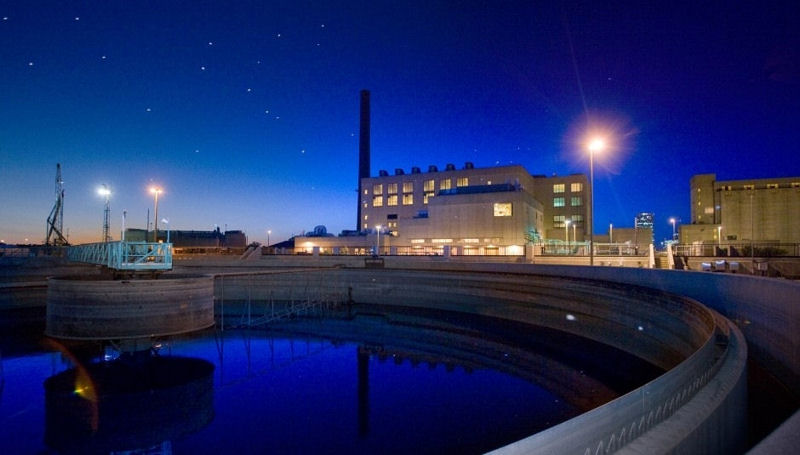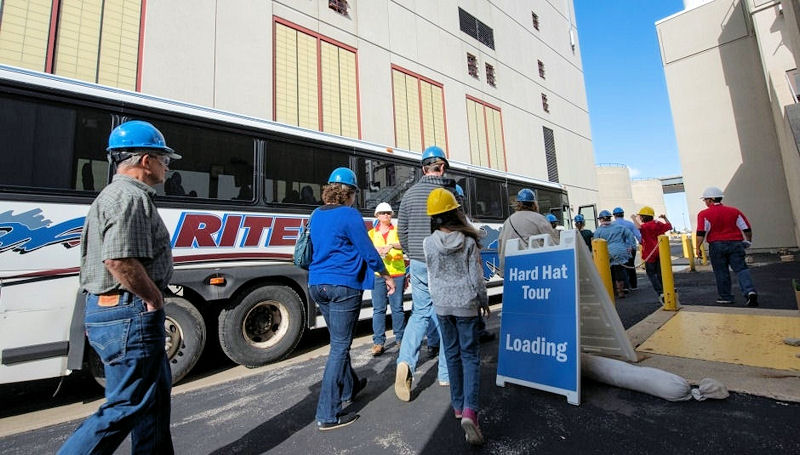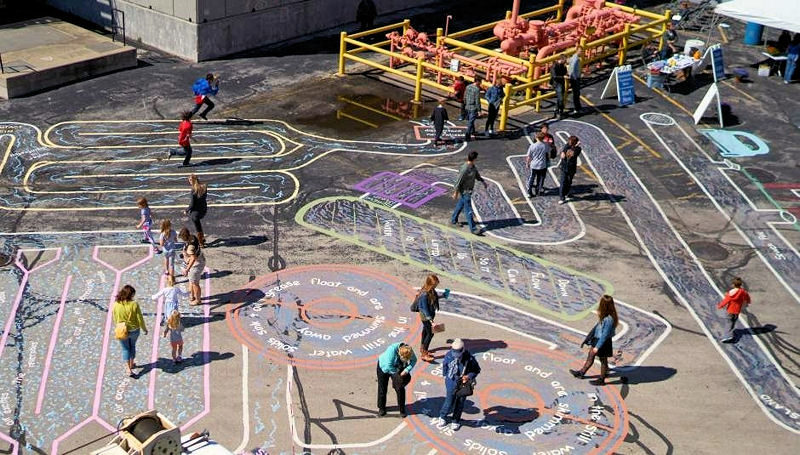
Jones Island Water Reclamation Facility is run jointly by Veolia Water North America (Chicago) and the Milwaukee Metropolitan Sewerage District through a private-public partnership that serves 1.1 million customers in southern Wisconsin. One of the main attractions of Doors Open Milwaukee, the facility draws thousands of visitors annually. Photo courtesy of Veolia.
Of the 150 attractions, such as free tours of historic churches and museums, offered during the annual Doors Open Milwaukee, the Jones Island Water Reclamation Facility (Milwaukee) is one of the most popular. The 1.1 million-m3/d (300-mgd) facility, which is run jointly by Veolia Water North America (Chicago) and the Milwaukee Metropolitan Sewerage District through a private-public partnership, has hosted more than 20,000 visitors from 22 different countries since Veolia started operating the facility 7 years ago, said Joyce W. Harms, communications and community relations manager at Veolia Water Milwaukee.

Visitors toured the Jones Island Water Reclamation Facility on a bus as part of Doors Open Milwaukee. The annual event has experienced double-digit growth since its inaugural year in 2011. Photo courtesy of Veolia.
“Since the beginning, the Jones Island Water Reclamation Facility has been a major attraction for the Doors Open Milwaukee program,” Harms said. “Our visitor numbers have grown each year starting at 400 the first year and reaching over 1700 during last year’s event. This year, we are prepared to provide tours for 2000 visitors at the facility in a single day.”

As part of the hard hat tour conducted by Veolia and local volunteers, visitors were able to view the process of making Milorganite, fertilizer produced as a by-product of the wastewater treatment. Photo courtesy of Veolia
Visitors’ reasons vary for wanting to see the water resource recovery facility (WRRF).
“For some, their curiosity is piqued by the chance to actually step inside part of Milwaukee’s critical infrastructure for a closer look at the sights, sounds, and science behind the wastewater treatment process, while other visitors are drawn to the facility’s rich history,” Harms said. “The free bag of Milorganite fertilizer that visitors receive doesn’t hurt our attendance either.”
Teaching and entertaining at the same time
In 1974, the American Society of Civil Engineers (Reston, Va.) designated the facility a National Historic Engineering Site because of its rich history. The WRRF has been in continuous operation since 1926, Harms said, and is “world-renowned for pioneering modern wastewater treatment technology. Jones Island was also one of the first facilities in the world to produce a fertilizer as the byproduct of the water reclamation process: Milorganite.”

Before boarding busses, Doors Open visitors walked the artist-created Wastewater Maze, which provided an up-close view of the wastewater treatment process. Photo courtesy of Veolia.
Visitors have the opportunity to take a 60-minute, in-depth tour that includes “donning a hard hat and safety glasses to watch the Milorganite production process, or they can opt for a 30-minute [‘load-and-go’] tour. Both tours travel via motor coach around the entire [30 ha] 75-ac Jones Island facility,” Harms said.
Visitors also can view the “workhorses of wastewater” — the bacteria used during the treatment process — under high-power microscopes, she said. Or they can “walk the path of wastewater” through a parking-lot sized maze that traces the whole wastewater treatment process.

Jones Island Water Reclamation Facility visitors often include children who are eager to see what happens at a water resource recovery facility and enjoy examining the trucks and playing in chalk-art areas. Photo courtesy of Veolia.
For the WRRF to entertain so many visitors, and pull off the task flawlessly, requires several months of preparation.
“Big-picture planning for Doors Open begins early in the year, and then progressively moves into becoming a full-time undertaking 6 to 8 weeks prior to the event,” Harms said. “The core event has grown each year from just a handful of bus tours during the first Doors Open event to the complex, multi-faceted event that it is today. For example, last year we outgrew the facility’s parking capacity so that this year visitors will park at a remote lot and be shuttled in,” she said. “This year we also added the ‘load-and-go’ tours to increase our tour capacity by another 700 visitors.”
“The logistics and details for our Doors Open event have grown be to quite complex and necessitates support from across departments — buildings and grounds, safety and operations — to make certain that we get it right,” Harms said.
— LaShell Stratton-Childers, WEF Highlights








November 13, 2015
Featured